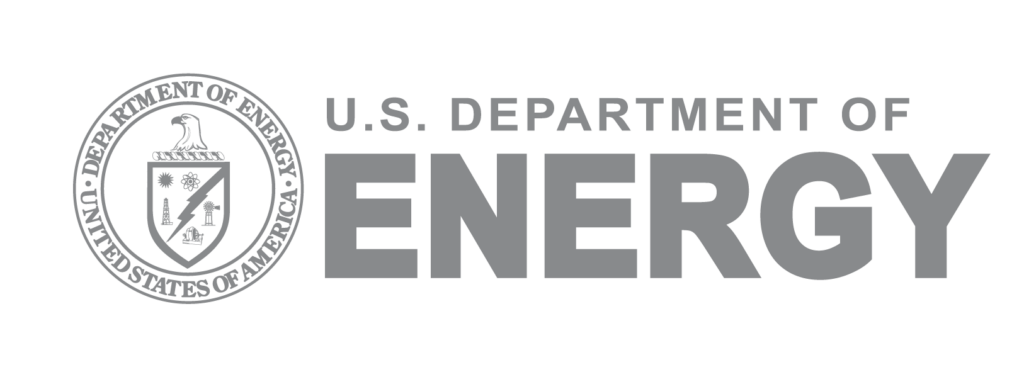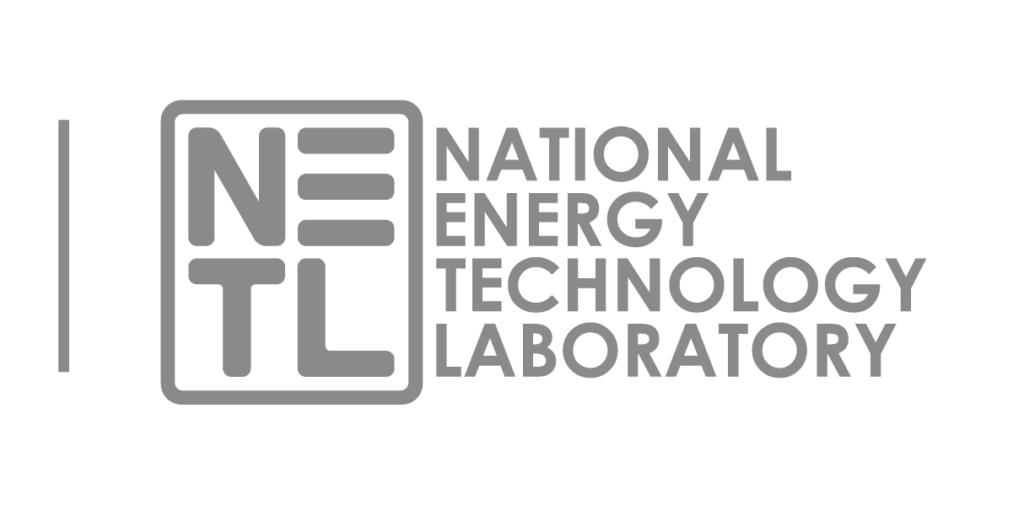Shih, C., Thornton, J., Rose, K., Syamlal, M., Bromhal, G., Guenther, C., Pfautz, J., Van Essendelft, D., and Bauer, J., 2021, Science-based Artificial Intelligence and Machine Learning (AI/ML) Institute (SAMI) – accelerating cross-disciplinary AI/ML for applied geoscience, energy, and environmental challenges. AGU Fall Meeting 2021, Dec. 13-17, New Orleans, LA/Virtual. Session: IN12A – Growing Opportunities for Multiparty Collaborations in Artificial Intelligence and Machine Learning for Science Research. https://ui.adsabs.harvard.edu/abs/2021AGUFMIN12A..05S/abstract
disCO2ver
Unlocking data-driven capabilities for the entire CCS community
Home » Bibliographies
Bibliographies
Science-based Artificial Intelligence and Machine Learning (AI/ML) Institute (SAMI) – Accelerating Cross-Disciplinary AI/ML for Applied Geoscience, Energy, and Environmental Challenges
Improving Prediction of Subsurface Properties Using a Geoscience Informed, Multi-Technique, Artificial Intelligence Approach
Rose, K., Mark-Moser, M., Suhag, A., and Bauer, J. 2021. Improving prediction of subsurface properties using a geoscience informed, multi-technique, artificial intelligence approach (Invited). AGU Fall Meeting 2021, Dec. 13-17, New Orleans, LA/Virtual. Session H33C – Application of Multimodal Physics-Informed Machine Learning/Deep Learning in Subsurface Flow and Transport Modeling. https://ui.adsabs.harvard.edu/abs/2021AGUFM.H33C..01R/abstract
Leveraging Data Ecosystems to Support Earth Science Research for Decarbonization
Morkner, P., Mark-Moser, M., Justman, D., Rowan, C., Bauer, J., and Rose, K., 2021. Leveraging Data Ecosystems to Support Earth Science Research For Decarbonization. AGU Fall Meeting 2021, Dec. 13-17, New Orleans, LA/Virtual. Session U21A-07 – How Earth Science Research Can Help Accelerate the Transition to a Decarbonized Economy. https://ui.adsabs.harvard.edu/abs/2021AGUFM.U21A..07M/abstract
Exploring Subsurface Data Availability on the Energy Data eXchange (EDX)
Morkner, P., Bean, A., Bauer, J., Barkhurst, A., and Rose, K.. 2021. Exploring subsurface data availability on the Energy Data eXchange. AGU Fall Meeting 2021, Dec. 13-17, New Orleans, LA/Virtual. Session: SY039 – Subsurface Storage of Natural Gas, CO2, and Hydrogen: Key Learnings and Future Opportunities. https://www.osti.gov/servlets/purl/1846774
AI/ML Integration for Accelerated Analysis and Forecast of Offshore Hazards
Mark-Moser, M., Wingo, P., Duran, R., Dyer, A., Zaengle, D., Suhag, A., Hoover, B., Pantaleone, S., Shay, J., Bauer, J., and Rose, K. 2021. AI/ML integration for accelerated analysis and forecast of offshore hazards. AGU Fall Meeting 2021, Dec. 13-17, New Orleans, LA/Virtual. Session: EP027 – Proven AI/ML applications in the Earth Sciences. https://www.osti.gov/servlets/purl/1846789
On the Predictability of Loop Current Eddy Shedding Events and Unexpected Links to the Brazil and Guiana Currents
Duran, R., Liang, X.S., Allende-Arandia, M.E., Appendini, C.M., Mark-Moser, M., Rose, K., Bauer, J. 2021. On the predictability of Loop Current Eddy Shedding events and unexpected links to the Brazil and Guiana Currents. AGU Fall Meeting 2021, Dec. 13-17, New Orleans, LA/Virtual. Session: OS45D – Ocean Dynamics of the Gulf of Mexico III Poster. https://www.osti.gov/servlets/purl/1846777
Evaluating the Effects of a Low-Carbon Energy Transition on Existing U.S. Fossil Energy Communities
Bauer, J., Rose, K., Romeo, L., Justman, D., Hoover, B., and B. White. 2021. Evaluating the effects of a low-carbon energy transition on existing U.S. fossil energy communities. AGU Fall Meeting 2021, Dec. 13-17, New Orleans, LA/Virtual. Session GC25G: Environmental Justice/Equity and Global Change: Methodologies, Frameworks, and Results II Poster. https://ui.adsabs.harvard.edu/abs/2021AGUFMGC25G0722B/abstract
Impact of time-dependent deformation on geomechanical risk for geologic carbon storage
Bao T.; Burghardt, J. A.; Gupta, V.; White, M. D. Impact of time-dependent deformation on geomechanical risk for geologic carbon storage. International Journal of Rock Mechanics and Mining Sciences 2021, 148, 104940. PNNL-SA-161528. https://doi.org/10.1016/j.ijrmms.2021.104940.
NETL Well Integrity Workshop: Identifying Well Integrity Research Needs for Subsurface Energy Infrastructure
Lackey, G.; Dilmore, R. NETL Well Integrity Workshop: Identifying Well Integrity Research Needs for Subsurface Energy Infrastructure; DOE/NETL-2021/2660; NETL Technical Report Series; U.S. Department of Energy, National Energy Technology Laboratory: Pittsburgh, PA, 2021; p 100. DOI: 10.2172/1828877 https://www.osti.gov/biblio/1828877
NRAP-Open-IAM Multisegmented Wellbore Reduced-Order Model
Baek S.; Bacon, D. H.; Huerta, N.J. NRAP-Open-IAM Multisegmented Wellbore Reduced-Order Model. PNNL-32364, 2021. Richland, WA: Pacific Northwest National Laboratory. https://doi.org/10.2172/1840652.
Transient evolution of permeability and friction in a slowly slipping fault activated by fluid pressurization
Cappa, F.; Guglielmi, Y.; De Barros, L. Transient evolution of permeability and friction in a slowly slipping fault activated by fluid pressurization. Nature Communications, 2022, 13, 3039 (2022). https://doi.org/10.1038/s41467-022-30798-3.
Rules and Tools Crosswalk: A Compendium of Computational Tools to Support Geologic Carbon Storage Environmentally Protective UIC Class VI Permitting
Lackey, G.; Strazisar, B. R.; Kobelski, B.; McEvoy, M.; Bacon, D. H.; Cihan, A.; Iyer, J.; Livers-Douglas, A.; Pawar, R.; Sminchak, J.; Wernette, B.; Dilmore, R. M. Rules and Tools Crosswalk: A Compendium of Computational Tools to Support Geologic Carbon Storage Environmentally Protective UIC Class VI Permitting; NRAP-TRS-I-001-2022; DOE.NETL-2022.3731; NETL Technical Report Series; U.S. Department of Energy, National Energy Technology Laboratory: Pittsburgh, PA, 2022; p 120. DOI: https://doi.org/10.2172/1870412
Applied machine learning model comparison: Predicting offshore platform integrity with gradient boosting algorithms and neural networks
Dyer, A.S., Zaengle, D., Nelson, J.R., Duran, R., Wenzlick, M., Wingo, P.C., Bauer, J.R., Rose, K., and Romeo, L. (2022). Applied machine learning model comparison: Predicting offshore platform integrity with gradient boosting algorithms and neural networks, Marine Structures, Volume 83, 103152. https://doi.org/10.1016/j.marstruc.2021.103152.
Bayesian Approach for In-Situ Stress Prediction and Uncertainty Quantification for Subsurface Engineering
Bao, T.; Burghardt, J. A. Bayesian Approach for In-Situ Stress Prediction and Uncertainty Quantification for Subsurface Engineering. Rock Mechanics and Rock Engineering 2022, 55, 4531–4548. https://doi.org/10.1007/s00603-022-02857-0.
Thermal and solubility effects on fault leakage during geologic carbon storage
Meguerdijian, S.; Pawar, R. J.; Harp, D. R.; Jha, B. Thermal and solubility effects on fault leakage during geologic carbon storage. International Journal of Greenhouse Gas Control 2022, 116, Article 103633. https://doi.org/10.1016/j.ijggc.2022.103633.
Leakage from Coexisting Geologic Forcing and Injection-Induced Pressurization: A Semi-Analytical Solution for Multilayered Aquifers with Multiple Wells
Cihan, A.; Oldenburg, C. M.; Birkholzer, J. T. Leakage from Coexisting Geologic Forcing and Injection-Induced Pressurization: A Semi-Analytical Solution for Multilayered Aquifers with Multiple Wells. Water Resources Research 2022, 58 (5), e2022WR032343. https://doi.org/10.1029/2022WR032343.
Coupled hydromechanical modeling of induced seismicity from CO2 injection in the Illinois Basin
Luu, K.; Schoenball, M.; Oldenburg, C. M.; Rutqvist, J. Coupled hydromechanical modeling of induced seismicity from CO2 injection in the Illinois Basin. Journal of Geophysical Research: Solid Earth 2022, 127(5), e2021JB023496. https://doi.org/10.1029/2021JB023496.
Monitoring Geologic Carbon Sequestration Using Electrical Resistivity Tomography
Yang, X.; Carrigan, C. Monitoring Geologic Carbon Sequestration Using Electrical Resistivity Tomography, Geophysical Monitoring for Geologic Carbon Storage, Huang, L. (Ed.), 2022, 255-271. https://doi.org/10.1002/9781119156871.ch16.
Monitoring Carbon Storage Sites With Time-Lapse Gravity Surveys. Geophysical Monitoring for Geologic Carbon Storage
Appriou, D.; Bonneville, A. (2022). Monitoring Carbon Storage Sites With Time-Lapse Gravity Surveys. Geophysical Monitoring for Geologic Carbon Storage, Huang, L. (Ed.), 2022, 211-232. https://doi.org/10.1002/9781119156871.ch14.
Fundamentals of Electrical and Electromagnetic Techniques for CO2 Monitoring
Gasperikova, E.; Morrison, H. F. Fundamentals of Electrical and Electromagnetic Techniques for CO2 Monitoring. Geophysical Monitoring for Geologic Carbon Storage, Huang, L. (Ed.), 2022, 233-253. https://doi.org/10.1002/9781119156871.ch15.
Possible Controls on Porosity Preservation in the Andaman Forearc Gas Hydrate System
Johnson, J., Rose, K., Torres, M. (2020, Jan). Possible controls on porosity preservation in the Andaman forearc gas hydrate system: OSR, AOM, and/or marine silicate weathering [Conference presentation]. Geologic Society of America Meeting 2020, Session: T99. Records of Early Diagenesis in Modern and Ancient Sediments. https://community.geosociety.org/gsa2020/program/technical
Back to the Future: Rescue, Curation, and Transformation of a Corpus of Carbon Storage Data
Sabbatino, M., Baker, V., Bauer, J., Creason, C., Romeo, L., Rose, K., Rowan, C., Zoch, G., submitted, Back to the Future: Rescue, Curation, and Transformation of a Corpus of Carbon Storage Data, Annual Meeting 2019, Session: AGU Dirty Stories of Data Rescue. https://www.osti.gov/servlets/purl/1778129
Developing a Virtual Subsurface Data Framework: Transforming DOE’s EDX data lake using ML/NLP
Rose, R. Rowan, C., Sabbatino, M., Baker, V., Bauer, J., Creason, C.G., Jones, T.J., Justman, D., Romeo, L., Suhag, A., Yeates, D., and Walker, S., submitted, Developing a Virtual Subsurface Data Framework: Transforming DOE’s EDX data lake using ML/NLP, Annual Meeting 2019, Session: IN020 – Data Integration: Enabling the Acceleration of Science Through Connectivity, Collaboration, and Convergent Science. https://agu.confex.com/agu/fm19/meetingapp.cgi/Paper/596761
Moving data “rocks” out of hard places: adapting and innovating data science tools to improve geoscience analytics
Yeates, D., Walker, S., Fillingham, J., Sabbatino, M., Suhag, A., Rose, K., Mark-Moser, M., Creason, C.G., Baker, V., submitted, Moving data “rocks” out of hard places: adapting and innovating data science tools to improve geoscience analytics, AGU Annual Meeting 2019, Session IN005 – AI for Model and Data Integration in the Geosciences. https://ui.adsabs.harvard.edu/abs/2019AGUFMIN32B..09Y/abstract
Subsurface Trend Analysis
Rose, K., Mark-Moser, M., Suhag, A. Subsurface Trend Analysis: A methodical framework for artificial intelligence subsurface property prediction. Machine Learning for Unconventional Resources, Nov. 18th 2019, University of Houston, Texas. https://www.osti.gov/servlets/purl/1778138
Putting Data to Work: Transforming Disparate Open-Source Data for Engineered-Natural Systems and Models
Creason, C.G., Romeo, L., Bauer, J., Rose, K., Rowan, C., and Sabbatino, M., 2019, Putting Data to Work: Transforming Disparate Open-Source Data for Engineered-Natural Systems and Models, AGU Annual Meeting 2019, Session: IN020 – Data Integration: Enabling the Acceleration of Science Through Connectivity, Collaboration, and Convergent Science. https://www.osti.gov/biblio/1778210






